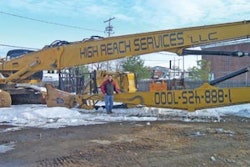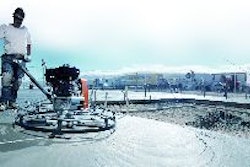I just finished sponsoring a construction equipment dealer CFO conference, as well as working on the Associated Equipment Distributors' (AED) Executive Forum, which will take place in September in Chicago. Working on both events has provided an up-to-date look at the construction industry.
At the CFO conference, we had a banking panel representing bankers working in our industry, financing equipment for both dealers and contractors; a banker who primarily represents the construction industry; and a banker who supplies WBE/MBE credits to contractors through financing arrangements. We also enjoyed an in-depth construction and equipment review provided by Eli Lustgarten, senior research analyst, Longbow Research.
Between these presentations, there wasn't much good news to pass around. If I had to summarize the first six months of 2009, I would not have anything good to say. And if I had to estimate the latter half of 2009 and provide a soft estimate for 2010, it is not much better. As we've said before in this column, how your business is doing is very much dependent upon where you're located and what niche you cover.
Credit based on risk factors
Sure there are banks still financing contractor equipment purchases or leases. However, the borrowers need to be top-tier credits with strong balance sheets and profitability. And even if you pass this first test, the cost of the "risk" factor plays a much more important role in the credit decision.
In other words, the banks are going to get paid for the risk they are taking. This same thinking applies to captives, because they have also incurred an increase in the cost of capital. So the financing is out there, but the cost to finance equipment will be higher and surrounded by tighter covenants.
One panel member at the CFO conference stated that his bank was still in the business and is applying consistent credit practices that remain unchanged from what they were. However, the deterioration of contractor profitability removes many contractors from getting loan approval. From what the bankers were saying, contractors with poor balance sheets, poor financial performance and poor backlog are going to have a hard time getting the financing needed to acquire equipment.
Both Lustgarten and the bankers provided the following market projections for the balance of 2009 and for 2010:
- We will bottom out in third or fourth quarter 2009 (in general).
- Housing will come back VERY slowly, starting fourth quarter.
- Commercial work will be down in 2009 and further in 2010.
- Public works could be up sooner depending on how stimulus money is allocated and spent.
- Materials costs should fall, as well as bid pricing as contractors fight for more work.
There are some bright spots, but not many. And to top it off, we can expect interest rates to start rising just as housing starts to pick up. It looks like many of you will need to ride out another year before things really start to improve.
Since these same projections affect the equipment dealers who attended the conference, you can imagine their thinking was parallel to what you may be thinking now: "What can we do to make this work?" In short, both dealers and contractors are in the same boat without a paddle - both having to find ways to work together to make it through this market correction. We have some smart people out there and I believe they will find ways to work together to soften the blow.
Stay the course
In prior columns, we discussed what contractors need to do to obtain financing and how to reduce break-even points. Based on current thinking, not much has changed unless you fall into a niche market that keeps you busy. The stimulus money is sure to help, but only if you work in the areas receiving the financing.
Cut your costs, sell off under-utilized equipment (if you are in the money), rent equipment, work out deals with your dealers, get creative, know your cost structure so you can bid properly and keep looking for that niche market that can put you over the top.



















